 Soviet Union (1958)
Soviet Union (1958)
Main Battle Tank – 27,500 Built
The most produced tank in history?
Still classed as a medium tank, the T-54 was clearly a superior design to the T-44. Nowadays it is seen as an all-out classic of the Cold War. The T-55 version, which appeared in 1958, was the sum of all the modifications applied to the previous T-54 series, with several differences which made a clear distinction from the previous model. One of these was NBC protection and a brand new engine. T-54s were modernized over time to the T-55 standard, leading to a nearly indistinguishable “T-54/55” generic type.
| Hello dear reader! This article is in need of some care and attention and may contain errors or inaccuracies. If you spot anything out of place, please let us know! |
By combining the T-54 and T-55 production figures, the Soviet Union delivered itself a whooping 60,500 main battle tanks, and when including local productions (Czech, Polish: 21,000 more), production reaches a staggering 85,500 units delivered. This is more than its WW2 ancestor, the legendary T-34 (84,000 estimated). Part of these were largely exported, with increasing numbers when more advanced models like the T-72 came to light. Again, this must be compared to the USA’s MBT production figures of the M47 Patton (9000), M48 Patton (12,000), M60 Patton (15,000) and M1 Abrams before 1990 (around 5000).
According to most intelligence reports published in the mid-1980s, when the Cold War suddenly grew colder, it was admitted that the Warsaw Pact could field more than 50,000 tanks in a single day, and modernized T-54/55s still accounted for a good part of this number. This has to be put in perspective with the T-62 (22,700+), T-64 (13,000+) and T-72 (25,000+) production figures, not to mention the T-80 (5400 as of 2005). But the technological gap between a modern-day, well-modernized T-80 and the T-54/55 easily explained such production differences. The T-55, like the T-54 was still a relatively inexpensive and unsophisticated design, fed by the same principles that made the T-34 an iconic figure of WW2.
The production itself was viewed as a quality, technological refinements or crew comfort always came second to reliability and simplicity. It had adequate firepower, protection and speed to match the life expectancy of a single tank in operations. This made the T-54/55 the most inexpensive MBT to date, with more exports than any other modern tank in history. Outside USSR, Warsaw Pact and allies, most non-aligned countries bought and had this model in operations. Thus, it is nowadays one of the best-known Soviet tanks, and certainly the most iconic of the Cold War.
However, the T-54/55 series has been battle-proven in all kind of environments, from the icy cold northern border between USSR and China, to the tropical jungles of Vietnam, and only Australia and Antarctica have not seen this model roll its tracks in anger. Unfortunately, its production figures never matched the quality standard of the western world. Countless Cold War engagements, during indirect conflicts, with western-built tanks, proved that it was inferior on the battlefield to its counterparts. A well-documented fact which was somewhat toned down by the countless local modernization and improvements aimed at rendering this tank a still valuable battlefield combination.
Design of the T-55 – model 1958
The all-improved T-55 was developed from 1955-58 onward at the Uralvagonzavod plant. It was basically the sum of upgrades performed on the former T-54s, but with full NBC protection called PAZ (Protivoatomnaya Zashchita), studied by the KB-60 design bureau in Kharkov.
Design
NBC protection
It was shown in tests that this tank could survive a 2-15 kt (tactical warhead) nuclear blast 300 meters (980 ft) from the epicenter, although the level of heat and radiation forbid any chances of survival for the crew at less 700 m. The sealing system associated with the NBC protection was triggered 0.3 seconds after detecting gamma radiation. This protection, however, was only partial, with particulate filtration, but not gamma radiation or poisoned gas. KB-60 completed its tests on the NBC kit in 1956, with the blueprints and the range of modifications required was then sent to Uralvagonzavod. The T-54M (Obyekt 139) also tested new production technologies and incorporated the sum of the latest upgrades of the T-54B and planned successors, under chief engineer Katsev’s supervision.
Engine
The T-55 was fitted with the new V-55 12-cylinder 4-stroke one-chamber 38.88 liter water-cooled diesel engine (581 bhp) to cope with the additional weight. Fuel pressure was augmented. The pneumatic starter with AK-150S charger was new. A new heating system for the engine compartment was introduced, as well as an MC-1 diesel fuel filter. The hatches over the engine compartment were modified for better access and maintenance. At the same time, operational range and fuel capacity were increased, with 300 liters added in tanks in the front hull, for a total of 680 without external tanks. The number of rounds carried rose from 34 to 45, of which some were stored in “wet containers”, in fact, lateral fuel tanks. The suspensions, tracks and transmission were basically unchanged, but the modern “starfish” type roadwheels were made mandatory.
Weaponry
The main gun was basically unchanged, with the characteristic new bore evacuator introduced on the T-55B. New ammunition had been developed, like the BK5M HEAT rounds which could penetrate 390 millimeters (15 in) of armor. The commander received a new TPKUB or TPKU-2B sight system, and the gunner a TNP-165 sight. The 12.7 mm (0.5 in) DShK installed around the loader hatch was dropped later, as it was found useless against modern jets. The T-55 was equipped with the “Rosa” fire protection system and the turret casting had a thicker armor while the back plate was slightly thinned to save weight. The gun was stabilized with a two-plane system while infra-red vision became a standard. The gun had a four shots per minute ratio.
The T-55A
This version was derived from the prototype Ob’yekt 155A in 1963, characterized by a new antiradiation lining and full PAZ/FVU chemical filtration system. This development was a logical step further after the PAZ protection suite, and was developed by the Morozov design bureau in Kharkov in conjunction with NII Stali (scientific research institute for steel). The result was a special lining called POV, and permitted by the intervention of the Vagonka bureau at Nizhni Tagil. This was a lead-impregnated plastic applied to all interior surfaces to protect the crew, outsides of the hatches and hatch combings, protected by a thin steel cover. Outside the overpressure system, a new NBC-proven air filtration completed the set against chemical agents. After trials, the production started in August 1963 as the T-55A.
The T-55 upgrades (1970s)
In the early 1970s, the need for additional firepower (experienced in distant conflicts where the export versions fought on) dictated the return of the Uralvagonzavod DShK 1938/46 or KPVT AA 12.7 mm (0.5 in) heavy machine gun on the gunner’s cupola. This upgrade was sometimes called “model 1970”. Later on, in 1974, KTD-1 and KTD-2 laser rangefinders and R-123 or R-123M radio sets were fitted. By the 1980’s the growing threat of personal-carried AT missiles, experience from Afghanistan and urban combat, triggered the adoption of the ZET-1 vehicle protection system. This was a net-like structure applied on the main gun and flipper-type side plates.
The T-55M & AM (late 1970 to 1980s)
These upgrades packages for the T-55s & T-55As comprised:
- The “Volna” fire control system
- The 9K116-1 “Bastion” ATGM system & 1K13 BOM guidance system
- The “Tsiklon-M1” gun stabilization system & TShSM-32PV sights
- The upgraded V-55U engine
- Improved suspension and RMSh tracks
- Increased armor, anti-mine, anti-napalm & improved anti-radiation protection
- R-173/173P radio set
- A laser range-finder in an armored box fitted over the main gun
- Soft side skirts & rear RPG screens (used only in Afghanistan)
- 81 mm (3.19 in) “Tucha” smoke grenade launchers
- BDD turret brow armor and glacis appliqué armor
The T-55M1 was a sub-variant fitted with a new 691 hp (515 kW) V-46-5M engine derived from the T-72 and rendered compact enough.
The T-55AD “Drozd” (1980s)
These T-55As were fitted with the “thrush” active protection system also called KAZ (kompleks aktivnoj zashchity). About 250 tanks from the Soviet naval infantry adopted this system but reverted to simpler reactive armor (ERA). These versions also adopted most of the T-55AM modifications, included the R-173 radio set, TShSM-32PV sight, “Tsiklon-M1” stabilizer among others. The AD-1 was upgraded with the new V-46-5M engine from the T-72.
T-55MV & T-55AMV (1990s)
This was basically an upgrade to the ERA (Explosive Reactive Armor) protection. The “V” stood for Vzryvnoj (or “explosive”). Not all T-55s were upgraded this way, many still kept the standard passive BDD/appliqué armor. The standardized ERA bricks (EDZ for “elementi dinamicheskoj zashchity”) are mounted on the hull, turret front and hull sides. The Elite units of the Soviet Naval Infantry were first to deploy these tanks, followed by the rest of the army in a gradual process after the collapse of the Soviet Union, and extended to previous versions like the T-55AMV (AM) and T-55MV (T-55M). These were also exported, notably to some Iraqi elite republican guards units. The sub-variant V-1 received the V-46-5M engine upgrade.
T-55M5
This is an “upgrade kit” aimed for export to all previous T-55/T-55A customers. This package includes “Kontakt-5” ERA panels, longer chassis, stabilized TVK-3 and TKN-1SM sights, upgraded main gun stabilization system for the 100 mm (3.94 in) D-10T2S, and the new V-55U engine or V-46-5M as an option for more mobility. The combat weight was less than 40 tons.
T-55M6
The latest upgrade, both for the Russian army and export, includes a longer chassis with six roadwheels per side, a completely overhauled turret with the 2A46M 125 mm (4.92 in) main gun and autoloader from the T-72B, V-46-5M engine and protection upgraded to the T-80U level. As an option, it could receive the 1A40-1 fire control system and ATGM system 9K120 “Svir” (from the T-72B), or A42 and 9K119 “Refleks” (from the T-80U).
Command versions
T-55K1, K2 & K3 ; T-55AK1, AK2 and AK3; T-55MK1, MK2 and MK3 were derivative command versions of the T-55, T-55A and T-55M respectively. The “K” which stood for “Komandorski”. The K1 and K2 received additional radio sets R-123/R-123M and were given to companies and battalions respectively (losing 5 rounds in the process), while the K3 received an R-130M, R-123M, a 10-meter antenna mast and a generator AB-1-P/30 (and losing 12 rounds). This was the divisional level command version. The modernized T55MK received R-173 (K1, K2) and an R-143T2 (K3) long range radios.

T-55A on display at the Imperial War Museum North, UK. Possibly from Tsahal, according to the identification plate (Author John Arwood, Credits – Wikimedia commons).
Production
The Object 155 was scheduled for production on 1 January 1958, replacing the T-54 and accepted into service as the T-55 in the Red Amy by May 8, 1958. Overall, 27,500 T-55s were built until 1981, as many upgrades followed along the sixties and seventies. Most T-54s were upgraded along the same lines as the T-55, ended as hybrid series collectively known in NATO as the T-54/55. With combined production, this series remained the bulk of the Soviet conventional force until the fall of USSR, and was also largely exported. The T-55 production eventually ceased at Kharkov in 1967 (replaced by the T-64) and at Nizhni Tagil in 1971 (replaced by the T-72). It was continued at Omsk (mainly for exports) until 1977. During the production course, the bow-mounted machine-gun was removed to store six additional rounds, while the coaxial SG MT 7.62 mm was superseded by the PKT. In the mid-1970s, the DShK 12.7 mm (0.5 in) was back on the turret, on the loader’s cupola, for additional firepower and AA fighting capabilities against NATO helicopters like the Huey Cobra.
Succession: The T-62
Other projects, the Object 165 and 166, were attempts to upgrade the T-55A with the new D54T 100 mm (3.94 in) smoothbore gun. After reviewing the design, the Vagonka bureau reported that only an enlargement of the hull would allow a wider turret race. But, in January 1961, a disgruntled Iranian officer crossed the border with the USSR with his brand-new M60A1 Patton. After closely examining this new tank, better protected and equipped with a 105 mm (4.13 in) gun, it was decided to upgrade the main gun to 115 mm (4.53 in). After quick development, this modified T-55 became the T-62 prototype, which led in turn to curtail the production of the T-55A as it was replaced by the T-62 on the same production lines. 25 pre-series prototypes were followed by full-scale production in July 1961.
T-55 variants & conversions
The Red Army kept perhaps 20,000 T-54/55s in battle readiness in case of a conventional war or to use in the aftermath of a nuclear war due to their conversion to the NBC standard. By the mid-1970s, they still counted for more than 85% of the Red Army MBT force. Thanks to gradual modernization campaigns and updated ammo, about 3000 of these contemporaries to the M47 Patton were still frontline when the Berlin wall fell in 1990. About 412 T-54/55s were in active service in 1995 but only 20 in 2000. However, 1200 were reported in storage as of 2008, with perhaps 100 T-55s in reserve and less than 500 in storage as of today.
Outside the countries from the following paragraphs, the T-55s were modernized or gave way to local variants in Argentina (TENSA upgrade), Croatia (the up-armored T-55 and the Minocistac), Cuba (upgraded to the S-75/S-125 Dvina TEL), Egypt (The T-55E Mark 0, Mk. I, Mk. II and Ramses II), Finland (T-55M), Great Britain (post-1990 packages and AA Marksman conversion for export), Hungary (local modernization into the AM standard), India (modifications on the tubes to distinguish themselves from Pakistani models or 105 mm/4.13 in upgrade), Iraq (T-55 Enigma, QM & QM2, rocket launcher, mortar conversions and local BTS-2 and BTS Saddam recovery vehicles), Iran (Type 72Z or Safir-74, Safir-86), Israel (Tiran-2, Tiran-5, Tiran-5Sh, Ti-67 & 67s and Achzarit APCs among others), Pakistan (Al Zarrar), China (Type 59), Peru (modernized T-55M1 Leon 1 & M2A1 Leon 2, Tifon 2 and T-55 fire-support, built in USSR), Rhodesia (T-55LD), Serbia (all-improved T-55H and the VIU-55 Munja engineers APC) and Slovenia (M-55, a local modernization performed by IDF’s Elbit expertise, and sub-variant M-55 USP for driver training).
Soviet T-55 conversions
Despite massive exports, derivatives, variants, and new designs like the T-62, 64, 72 and T-80, the T-54/55 family formed the bulk of the Red Army for 40 solid years, both for the ground forces and naval infantry branches. To obtain precise numbers of the modernized T-55s in service today is quite tricky, but it is assumed to have decreased greatly due the end of the Cold War, lack of funds for maintenance and operations, and it is estimated a good 70% of the park is now kept in reserve.
Recovery vehicles
The BTS-3 were medium armored recovery tractors (Bronetankoviy TyagachSredniy) built on the T-55A. The T-55 MARRS is apparently a late recovery kit developed by Vickers.
Bridgelayers
MT-55 or MTU-55 : The TM stood for “Tankoviy Mostoukladchik”. These were, apparently, Czechoslovak-built MT-55As converted as bridgelayers with a scissors-type bridge. The MTU-12 (1955) was equipped with a 12 m (39 ft) long single span bridge with 50 tons capacity. The MTU-20 had a twin-treadway superstructure giving a 20 m (66 ft) long, 50-ton capacity bridge. Most were based on the T-54 but others were built on the T-55 basis.
Genie vehicles
The BTU dozer blade kit was developed to be mounted in less than 1 hour on every T-54/55. The ALT-55 was a permanently converted bulldozer, with a new superstructure and an angular concave dozer blade with hydraulic rams. Another variant of the T-55 dozer is a tracked armored excavator, turretless, with a rotatable armored cab with a boom and a bucket. The ubiquitous IMR (Inzhenernaya Mashina Razgrazhdeniya) is the main engineer version, turretless with a modified superstructure, hydraulically operated crane with a capacity of 2 tonnes, convertible to an excavator, dozer blade and searchlight for night operations. Only two heavy crane versions SPK-12G were built, while the MTP-3 is an SU-122-54 converted to a technical support vehicle fitted with a light crane (1973). It is noted that some T-55s were also fitted with twin-jet-engine mounts and multiple water nozzles for fire-fighting.
BMR-2 mine clearing vehicle
The BMR-2 (1987) is the main version derive from the T-55. It stands for Boyevaya Mashina Razminirovaniya or mine clearing tank. This vehicle had a fixed superstructure armed with an NSVT light MG, a KMT-7 mine clearing set and tried many mine roller designs.
OT-55 flamethrower
The OT-55 (or TO-55 derived from the Ob\’yekt 482), is equipped with the ATO-200 flame projector. Ignition used by pyrotechnic charges, with 12 charges per-loaded. The stowage tank contains 460-liters (and each burst averages 36l). Maximum range is about 200 meters (656 ft).
BTR-T armored personnel carrier
This is a recent heavy APC based on the T-55 (Bronetransporter-Tyazhelyy), with the DPM as a sub-variant convoy escort vehicle. Intended for export and fighting in the Caucasus region.
Czechoslovak T-55s & conversions
The T-55A was the main version built in Czechoslovakia. Due to higher quality standard compared to USSR manufacture, they were more widely exported. They differed only by details like redesigned engine access plates (three plates fitted to the hull to reduce track shedding) and oval engine grills in the engine decks. The sub-variant AK (command) had a modified base plate on the turret roof for a radio mast.
-The T-55AMB, first Czechoslovak upgrade, with local-built laser rangefinder, fire control system and wind sensor mast.
-The T-55AM1 Kladivo, local AM version, with local-built “Kladivo” computerized fire control system, laser rangefinder and cross-wind sensor mast. The AM1K3 is the related command version.
-The T-55AM2, locally upgraded version with the “horseshoe” turret passive BDD appliqué armor, hull front and sideplates. Individual steel boxes are filled with Penpolyurethane and some hull cavities were filled for added protection. It was upgraded to the V-55U engine with integral supercharger (620 hp) and R-173P radio set, had 8 smoke-grenade launchers (turret right-hand-side) and additional headlights. Sub-variants includes the Dyna-1 armor upgrade, the T-55AM2B equipped to fire the laser-guided 9M117 100 mm (3.94 in) “Bastion” (AT-10 Stabber) ATGM and 1K13 BOM gunner’s sight. The T-55AM2K1, T-55AM2K2, T-55AM2K3 are command version respectively at company, battalion, and division levels.
-The VT-55A recovery vehicle, widely exported. It had a 15 tonnes capacity crane, main (44 tonnes cap.) and secondary winches (800 kg cap.). The sub-variant VT-55KS is the main export versions while the ZS-55A had a BTU-55 dozer blade.
-The JVBT-55A genie vehicle, is the main Czechoslovak crane tank (15 cap. tons crane and BTU-55 dozer blade). The JVBT-55KS is the associated export variant.
-The MT-55A bridgelayer and sub-variants MT-55K and MT-55L which had longer bridges. MT-55KS is the export version and the PM-55L is the lightweight version.
The Modern-day Czech Republic also developed the T-55C-1 dozer “Bublina”, T-55C-2 “Favorit” driver training tank and fire-fighting SPOT-55.

Serbian T-55H as seen in 2007, a late, localized modification of the AMB variant.
East German T-55s & conversions
These include the T-54Z, T-54AZ and AMZ (Z for Zusatzausrüstung or “additional equipment”), equivalent to the T-54AM. The T-54T and T-54TB recovery tanks were equivalent to the BTS-2. Other variants included the T-55AM Minenräumladung (mine-clearer) and T-54 M1975/2 flail variant, T-55T with extra towing equipment and dozer blades, T-55TK crane tanks, BLG-60 bridgelayers and sub-variant BLG-60M2 with a larger bridgespan.
Polish T-55s & conversions
These include the T-55AD command tank with a 100 miles (161 km) range radio, T-55L (local version of the T-55A) and LD (T-54 rebuilt to this standard), command versions AD-1 & 2 (T-55A with additional R-123/130 radio).
-The modern Polish T-55AM is called the T-55AM “Merida”, comprising a local SKO “Merida” fire control system, cross-wind sensor, CCDN-1 day/night rangefinder, passive BDD protection and active protection consisting of a laser-warning system WPL-1 combined with WWGD-1 “Erb” and WPD-1 “Tellur” 81 mm (3.19 in) smoke-grenade launchers each side of the turret and W-55 WAX engine developing 613 hp (457 kW). Sub-variants include the genie T-55AMS and AD-1M & AD-2M command versions.
-The T-55AM2BP is a Czechoslovak-based version for export only, built under licence
-The W-152SC is a conversion into a S-125SC “Newa-SC” air-defense missile system.
-The WZT-1 & 2 are recovery vehicles, while the main mine-clearer is the T-55A engineer tank, with KMT-4 mine plow. The IWT is the standard dozer/crane version, and the BLG-60 was a joint Polish/East German bridgelayer.
Romanian T-55s & conversions
Romania modified the T-55 for the local needs in the 1970s. Modernizations were performed locally, like the local T-55AM sub-divided into tanks equipped with the Russian “Volna”, Czechoslovak “Kladivo” and local “Ciclop” fire control systems.
-The local production was the TR-580 (Tanc Românesc Model 580) in 1974, with a new, longer hull and chassis, 6 road wheels and metal side skirts, but equipped with the original 580 hp engine. 400 were produced until 1981, including the TER-800 and TCZ-800 ARVs.
-The TR-85 (for 1985) was the second major upgrade and variant with a new modified turret, fire control system, suspensions and a more powerful German engine.
-The BLG-67, along with the sub-variants 67M and 67M2 are the main bridgelayer variant.

East-German T-55AM2B now on display at the Munster museum.
Ukrainian T-55s & conversions
The Kharkiv Morozov Machine Building Design Bureau was responsible for fitting on T-55s 4 smoke grenade discharges cluster and a laser rangefinder, and later the fitting of a 125 mm (4.92 in) KBM1 smoothbore gun.
-The T-55 AGM is the locally modernized version, aimed at convert all T-54/55s to the T-80 standard. (a thorough description will be made in the modern Ukrainian section of the website)
-The T-55-64 was an other upgrade to the T-64 standard suspension and powerplant.
-The T-55MV is a tailor-made modernized version or package for the export market.
Yugoslav T-55s & conversions
Before the breakup following the death of Marshal Tito, the country had a significant fleet of T-54/55s (called TZI-JVBT), which were gradually modernized as the T-55AI “Igman”. This version had components of the M-84 (local T-72), which includes the engine, external AT-3 Sagger missile rails, simplified SUV (meteosensor & laser rangefinders), spaced armor on the turret and front and smoke dischargers.
Other modern operators
The list includes Abkhazia (a separatist republic which captured Georgian T-55s and operated them until 2008, also seeing service in Ossetia), Afghanistan (50 ordered in 1961, later 705 delivered between 1978 and 1991), Algeria (175 total), Angola (around 400 T-55 and modernized versions from various sources, which saw heavy fighting), Armenia (perhaps 40), Bangladesh (122 modernized T-54/55s today), Cambodia (205 from 1980 to 1990 including Polish T-55AM2BP), Chad (60), Central African Republic (4), Democratic Republic of the Congo (20, ex-Ukrainian in 2006), Ivory Coast (10), Cuba (1300+, around 120 modernized T-55M/AMs), Egypt (around 700 T-55s delivered between 1963 and 1973), Eritrea (120 ex-Bulgarian, 2005), Ethiopia (1200+ from various sources, less than 100-150 as of today), Georgia (108 as of 1992), Guinea (8, 1974), Iran (120+65 ex-Libyan and Syrian, now upgraded), Iraq (300+250+25+150 from various sources as of 1991), North Korea (570 from USSR and Belarus), Laos (15), Latvia (5), Lebanon (400?), Mali (12 T-54/55), Mauritania (51), Mongolia (250), Mozambique (110), Namibia (15?), Nicaragua (136), Nigeria (100?), Peru (250), Romania (850 + 400 TR-580), Rwanda (30 T-54/55), Sarhawi Republic (50), Somaliland (85?), Ossetia (12/15 T-55s), Sri Lanka (99 from various sources 1991-2003), Sudan (160 from various sources), Syria (1375 total), Togo (2), Uganda (160 total), Uruguay (Ex-Tiran-4/5She), Vietnam (perhaps 450 today, from 600 ordered by the NVA), Uzbekistan (80), Yemen (approx. 150) and Zambia (20).
Former operators
Outside the above list, are Albania, Azerbaidjan, Belarus, Bulgaria, Croatia, Finland, Ecuador, Hungary, India (apparently 1219 in several batches), Israel (by captures, peaked in 1990 with 1500 T-54/55)s, Macedonia, Montenegro, Morocco, Pakistan, Serbia (510 T-54/55s), Slovakia (206), Slovenia (58), and Ukraine (still 112 in service by 2010).
The T-54/55 in action
Here is a summarized list of major events were T-55 or T-54/55s were committed in the world.
In Europe, the 1956 Invasion of Hungary, the martial law in Poland and the Yugoslav wars in the 1990s.
In the Middle East the 1967 Six-Day war, 1970 Jordanian civil war, 1973 Yom Kippur war, 1980s Lebanon war and Iran-Iraq war, not to mention the 1991 and 2001 coalition wars against Iraqi forces (Operations Desert Storm and Iraqi Freedom). Until recently, T-55s participated on both sides in the Syrian civil war.
In the Far East, T-54 and T-55 action revolved around the Vietnamese conflict, with the North Vietnamese army. They also participated in the Indo-Pakistani wars, Cambodian wars and the Sri Lankan civil war, against LTTE or Tamil Tigers.
In Africa, the Ugandan-Tanzanian wars, the Angolan and Mozambique wars, and more recently the Libyan civil war.
It could be said that the T-54/55 has encountered or fought with nearly all NATO tanks types ever produced during the Cold War but a few, and was for some time a master standard to judge western tanks combat performances.
T-55 specifications |
|
| Dimensions (L-w-h) | 6.27 (9 m oa) x 3.15 x 2.40 m (20.6 x 10.4 x 7.1 ft) |
| Total weight, battle ready | 36 tons – 36.4 long tonnes (72,000 lbs) |
| Crew | 4 (commander, driver, gunner, loader) |
| Propulsion | V-55 12-cyl diesel, 581 hp (433 kW) |
| Top speed | 55 km/h (34 mph) |
| Suspensions | Torsion bars with hydraulic arms |
| Range (with extra tanks) | 501 (960 l) to 600 km (311 to 370 mi) |
| Armament | Main: 1 x 100 mm D-10T2G or D-10T2 rifled (3.94 in) Sec: 1 x 12.7 mm (0.5 in) DSHK AA (back in 1972) Sec: 1-2x 7.62 mm (0.3 in) PKT & SGMT machine guns |
| Armor | Frontal glacis 120 mm (4.7 in), sides 80 (3.15 in), rear 45 (1.77 in), turret front 200 (7.87 in), roof 30 (1.18 in), bottom 20 mm (0.79 in) |
| Production (USSR only) | Approx. 27,500 |
T-55 related links
The T-54/55 on Wikipedia
The T-55 On Military Factory
On T-54/55s variants and operators
Gallery

MTU-20 bridgelayer conversion of the T-55, now on display at the Latrun museum
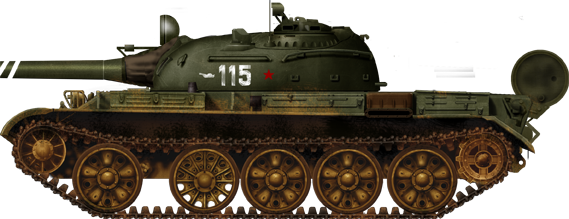
Soviet T-55, early production, summer exercises, early 1960s.

Syrian T-55, Golan heights, Yom Kippur war, 1973.
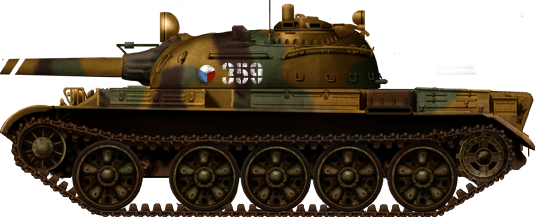
Czechoslovak T-55, 1978.
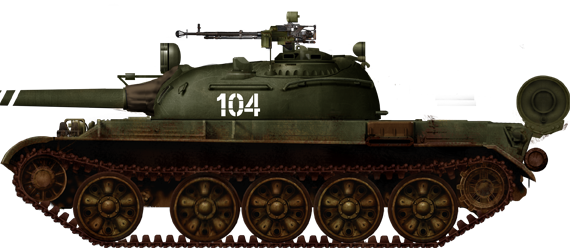
North Korean T-55, 1975.

Finnish T-55, 1980s.
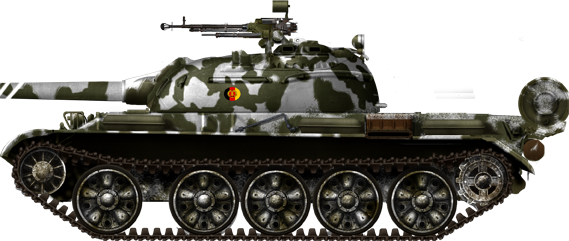
East German T-55 in exercises with a winter camouflage, 1960s.

Syrian T-55, Beirut, Lebanon, 1982.
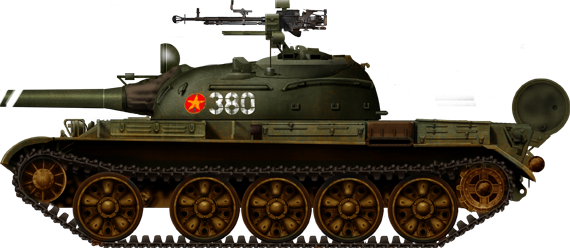
North Vietnamese T-55, 1971-73.

Iranian T-55, 1980s.
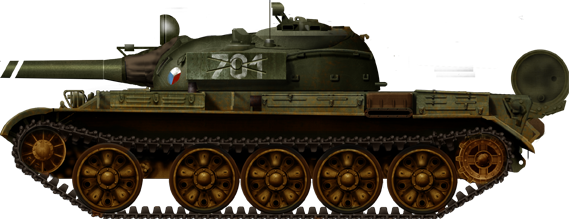
Czechoslovak-built T-55A, 1970s.
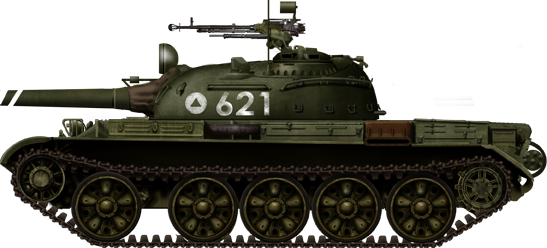
Soviet T-54/55, during exercises, 1970s.
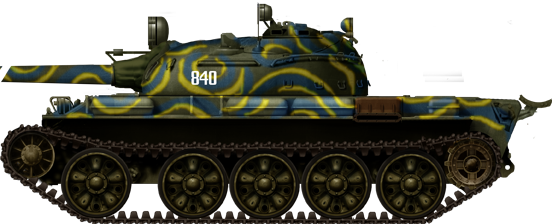
Afghan T-55A, as found in a scrap yard at Kandahar, 2000s.
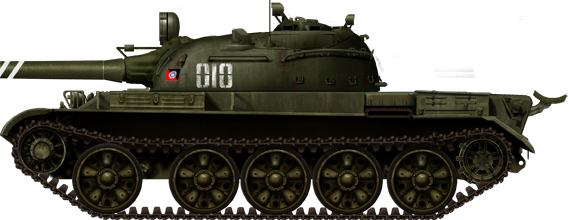
Somali T-55A at the time of the UN intervention (Operation Restore Hope) 1992-95.
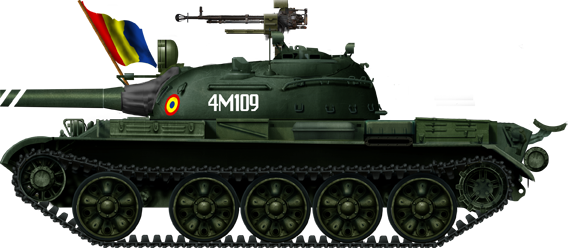
Romanian T-55A from the time of the anti-communist revolution of 1989
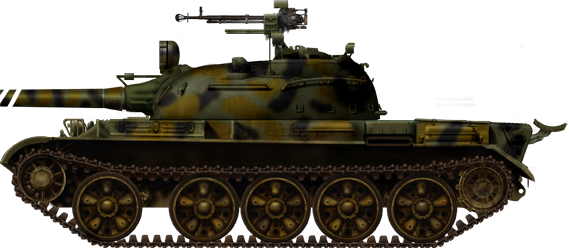
Serbian T-55A in Bosnia, 1990s
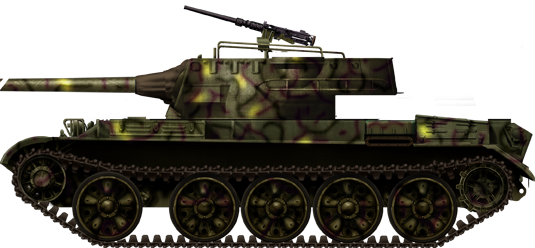
Bosnian Serb T-55A/M18 Hellcat hybrid (SO 76 M-18 Mod) used for mechanic training before the war in Bosnia Herzegovina, 1990s

Czechoslovak-built Croat T-55A in Turanj near Karlovac, 1990s.
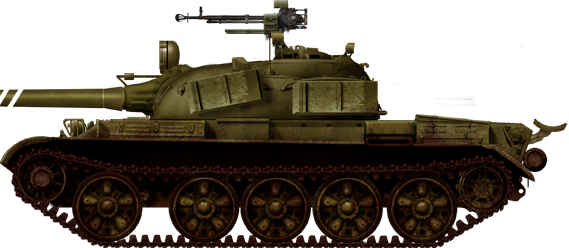
Macedonian T-55A, late 1990s.
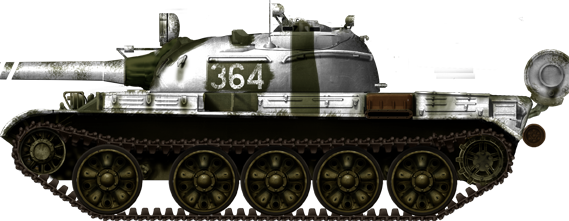
Soviet T-55A, winter 1970 maneuvers.
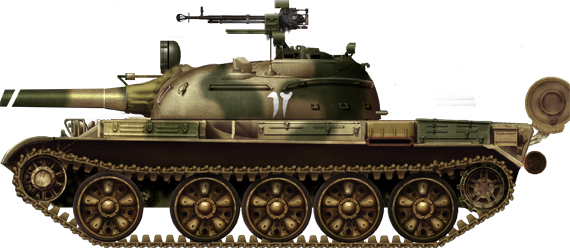
Iraqi T-55A, First Gulf war, 1991.
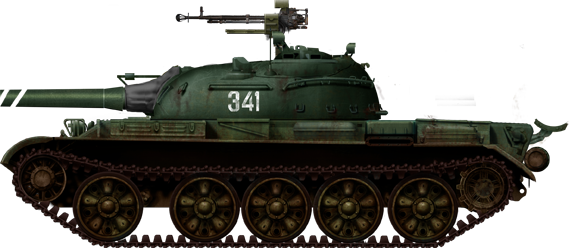
Albanian T-54/55, 1997 revolt.
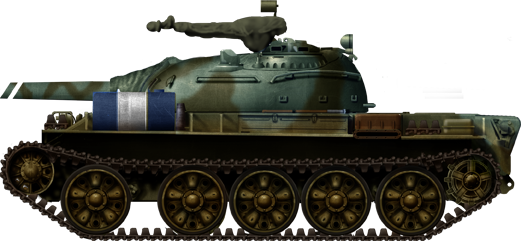
Afghan Northern Alliance T-54/55, 2000s.
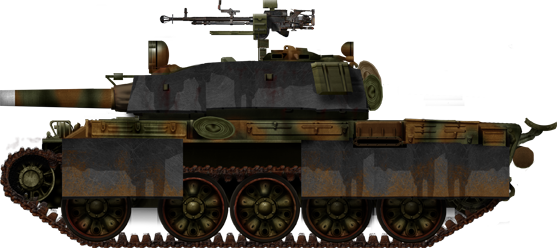
Serbian T-54/55 from the 32nd VRS, 1990s.
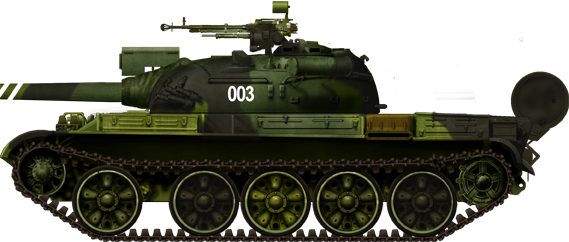
Modernized T-54/55 A, 1980s.
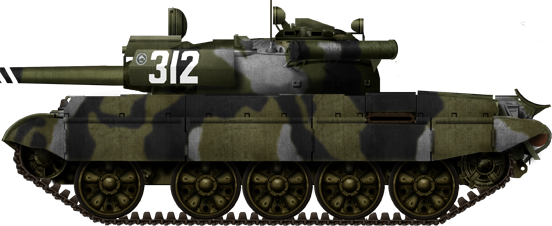
T-55AM, Soviet naval infantry, 336th Naval Guard brigade, Baltic fleet, early 1990s.
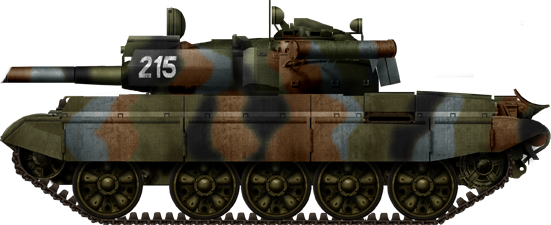
Georgian T-55AM in the 2000s.
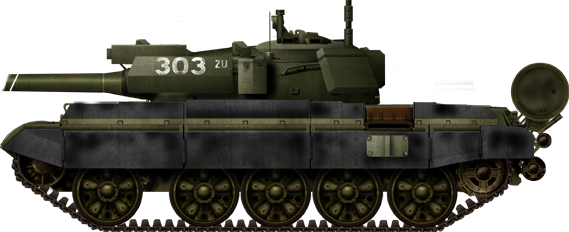
Serbian Czechoslovak-built T-55AM2 Kladivo, 1992.
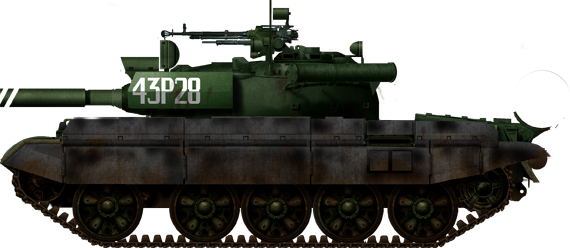
Romanian T-55AM, 1990s.
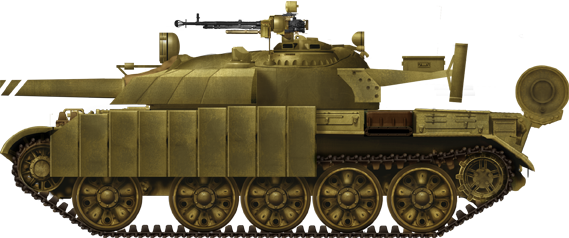
Iraqi T-55AD-1 Enigma, Elite Republican Guards commander tank, 1991.

Serbian T-55H, 1990s.

IDF Tiran-5, 1980s.
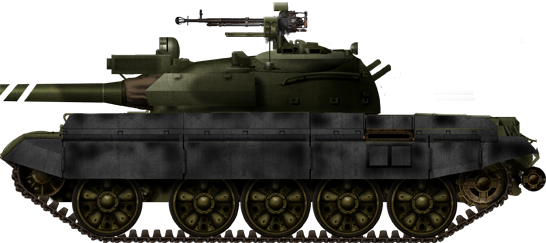
Soviet T-55M, 1983.
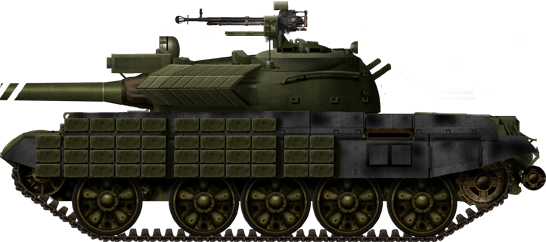
Soviet T-55MB, 1985.
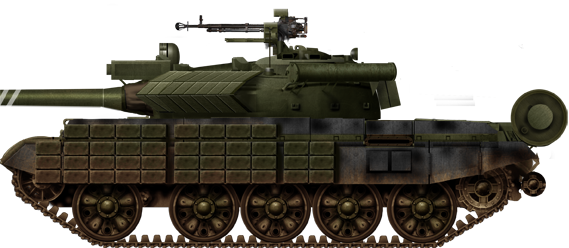
Soviet T-55AMB, 1989.

39 replies on “T-55”
Hi,
It’s written at 5th paragraph: “…from the icy cold northern border between USSR and China, to the tropical jungles of Indonesia…”
Indonesia didn’t have T-55 or anything derived from it. Their tanks before 2013 are light tanks: PT-76, AMX-13, and FV101 Scorpion.
I think the paragraph should be corrected.
Thanks.
Corrected ! Thanks
-The webmaster
Hello, who draws the photos of the tanks?
Making a cold war mod and i would like to talk to that person.
Thanks in Advance:
Raymond
You mean the illustrations ?
Yes.
I just sent you a PM, check your mailbox.
Irregular year for Serbian T-55 … Year 1992-93 could be …
But it’s not 1990.
Hello Mitar,
1990s means from 1990 to 1999. We don’t know the exact year.
I know the NVA used a large numbers T-54/55’s against the South Vietnamese in 1971-75, but did the US ever face T-54/55’s?
Indeed they did

Any specific operations? 1969-72 I’d assume.
That picture seems to be from the battle of Kontum.
But T-54s served in plenty of Vietnam battles.
Would they have participated in the battle of Khe Sahn?
Osprey’s Khe Sanh book only mentions the NVA 203rd Tank Regiment, but no mention of the actual tanks is made. We have found pictures of destroyed PT-76s at Khe Sanh.
We couldn’t find more info, sorry.
According to Wikipedia, after the Americans left Vietnam, the North Vietnamese overran the base (Tân Cảnh and Đắk Tô) using T 54 of the 203rd Tank Regiment. This might mean that they could have used the tanks on other assaults. According to an episode of Greatest Tank Battles, only PT 76s were used at Ben Het.
fantastic page. greetings fron Mexico
Muchas gracias, contento de escucharlo, Julio.
– TE Moderator
Hello! my new proyect is the Afghan t55 in a scrap yard, 2000s. Colours are russian green with yellow bands? and… will you help me please? thanks moderator
During the late-80’s/early 90’s, did the VDV use T-55’s? I’ve been researching this topic for a good while now, and haven’t come to a conclusive answer–sources differ.
I’ve read that they’re too heavy to drop, and most videos seem to show them only dropping with BMD’s (I’ve also heard they used BTR-80’s and BMP-2’s, but haven’t seen anything photo/video evidence of that and). Would they have received T-55’s once on the ground?
Thanks.
ВДВ не использовали Т-55. БМП-2 и БТР-80 использовались частями ВДВ в Афганистане…. В отдельных случаях, подразделения ВДВ могли взаимодействовать с танковыми у которых были Т-55, но штатно в составе ВДВ этих танков не было. А вот морская пехота СССР эти танки использовала в танковых батальонах бригад и полков морской пехоты.
С уважением
Hello! my new proyect is the Afghan t55 in a scrap yard, 2000s. Colours are russian green with yellow bands? and… will you help me please? thanks moderator
Pl send the technical description and technical data of ARV VT 55, ABBOT COMAND POST , ABBOT FRT. PL SEND ON MY EMAIL AS EARLY AS POSSIBLE I HAVE TO MAINTAINE FOR MY MUSEUM
Hi guys , can anyone please help me to identify what type of elements were used in the armor of the T55
T-55 used Rolled Homogeneous Armoured Steel (RHA) for its construction, as for the exact alloying elements used I am not aware
TE Moderator
Good information source as always. l love it. Yet, not showing the T-55AM “Merida” tank silhouette added armor and distinctive Marine Blue color is a sad issue. 🙁
The tank itself is an interesting and nicely equipped one. Today, there are not much of it left in good condition. A few years back it started to gain in its value a lot. It is stated now as a collectible piece and not possible to purchase from the Polish Army anymore. If any shows up it reaches a very high price range. But it gets a new owner almost immediately.
Gents: Keep the great work thank you. One minor point in regards to the US Intervention in Somalia, Operation Restore Hope was a UN sanctioned mission in which 20 countries took part, myself deploying with the Canadian Airborne Regiment Battle Group. The dates for the intervention were early nineties Dec 92 with all UN and US personnel withdrawing by March 95. Thank you
Hello Steve,
Thanks for your appreciation and service there.
The legend of the Somali tank has been amended.
Best,
David B. TE manager
This may be difficult but maybe a page on the T-55 Hurricane? It was designed to put out large oil fires. It had a modified T-55 chassis with a turret that had a MIG-21 engine mount. It looks really cool.
The prototype (the only one built) is at the German Fire Museum in Fulda.
e-mail me at [email protected] and I’ll send you the 2 photos I took in 2017.
I looked it up, and it looks… weird to say the least. That thing on the front looks like a rocket engine
…thank you, very much so…
My Favourite T55 Variant must be the T55AM2 Klavido looks so cool and a very good tank. I like the East german livery the best. You guys are doing a great job keep up the good work! 😀
Thanks Saunders ! I hope in the future the article will be split up and detailed in between versions, including the Kladivo. In the meantime i’m about to add a dozen new illustrations from my world@war series from Helion publishing.
– The author
Oh yeah another thing. Make the drawing of T55AM2 Kladivo full with everthing.
How would you distinguish a t-55 from t-54? Somebody said somekind of air vent but I can’t find it. Any help? Thanks!
Mushroom-shaped vent on the top right of the turret. If it’s there, it is a T-54. If it is not, it is a T-55.
A bit more complicated for the Chinese variants, but eh.
“Unfortunately, its production figures never matched the quality standard of the western world. Countless Cold War engagements, during indirect conflicts, with western-built tanks, proved that it was inferior on the battlefield to its counterparts. A well-documented fact which was somewhat toned down by the countless local modernization and improvements aimed at rendering this tank a still valuable battlefield combination.”
That is a very generic statement. Vehicle’s performance in combat has no correlation with its qualities as what we had seen mostly were either completely inept forces misusing equipment or one force being hopelessly outdated compared to the attacking force. In general, western tanks had a tendency to fail spectacularly as well. By that logic, Abrams tanks are quantity tanks and quite match quality of modern tanks, because they had failed horribly in Iraq.
Very nice work as always, can’t wait for the full T-54 article